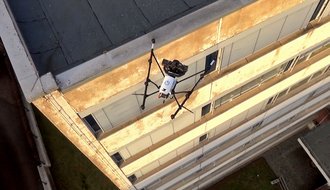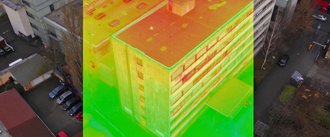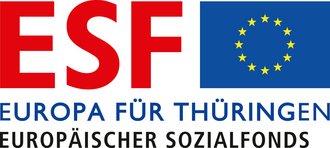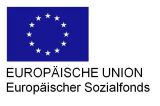This project will be funded by the German State of Thuringia and the European Social Fund (ESF) until the beginning of 2019.
All over the world, more and more people are moving to cities. Urban planners and the construction industry are being confronted with enormous challenges which can be overcome through densification and adaptive reuse. As of now, the German federal government has responded with a new urban-planning regulation: the introduction of the "urban areas" zoning category, designed to simplify construction in inner-city locations.
Such urbanisation has given rise to planning processes that require implementation as fast as possible under difficult conditions. The newly established group of researchers at the Bauhaus-Universität Weimar wish to support the development of these processes through the use of digital methods. Project leader Guido Morgenthal, professor of Modeling and Simulation Design in the Faculty of Civil Engineering, explains the motivation behind the research group: "In both new construction and renovations, problems arise when planning fundamentals are incomplete, processes are not transparent, or when there is ineffective communication between parties." Digital engineering methods could facilitate solving these issues. Automated collection, storage, analysis and visualisation of structural data, particularly for complex projects, could be efficiently planned and executed.
In order to achieve this, the Weimar researchers rely on an interdisciplinary approach and advanced technologies, such as drone-supported assessment of the construction of existing buildings, detection of structural damage with automated image analysis (computer vision), thermographic energy performance evaluation, sensor-based monitoring of key characteristics. All of this data is collected and stored in a building information modelling (BIM) system, as well as visualisation and interaction using virtual reality (VR).
Model property in Weimar
With the support of the applicants Prof. Guido Morgenthal, Prof. Volker Rodehorst, and Prof. Conrad Völker, researchers will be developing new methods and testing them on a model property in Weimar. To that end, data regarding the construction, energy and structural condition of a suitable existing building will be collected and merged.
The starting point of the investigation is a comprehensive analysis with UAVs (unmanned aerial vehicles), which take off from the building autonomously and generate both image and thermographic data. Afterward, customised algorithms create three-dimensional building, neighbourhood, and terrain models, mapping any identified damage and energy assessments. The three-dimensional digital models can later be converted into physical models with 3D printing. Through the use of advanced sensors, physical measurements can also be obtained - wind flow, pollution concentration, noise level - and integrated into the data set.
Collaboration partners
The Weimar researchers are supported by the System Design department at the Institute for Microelectronic and Mechatronic Systems GmbH (IMMS), headed by Dr. Tino Hutschenreuther. As an affiliated institute of the TU Ilmenau, the IMMS conducts foundational research and industry-related applied research and is involved in developing the field of complex mechatronic systems and microsystems, complex embedded systems, microelectronics, and industrial measurement technology. In addition, the research group will be assisted throughout the project by an industrial advisory board, which will integrate Thuringian companies into the project and ensure direct knowledge and technology transfer from research to the industry. At the kick-off meeting in November, responsibilities were internally assigned and a suitable model property was selected. The researchers aim to start with the fully digital data collection and analysis of the building by January 2017.
Contact:
Bauhaus-Universität Weimar
Professorship for Modelling and Simulation of Structures
Prof. Guido Morgenthal
Tel.: +49 (0) 36 43/58 44 17
E-mail: guido.morgenthal [at] uni-weimar.de











